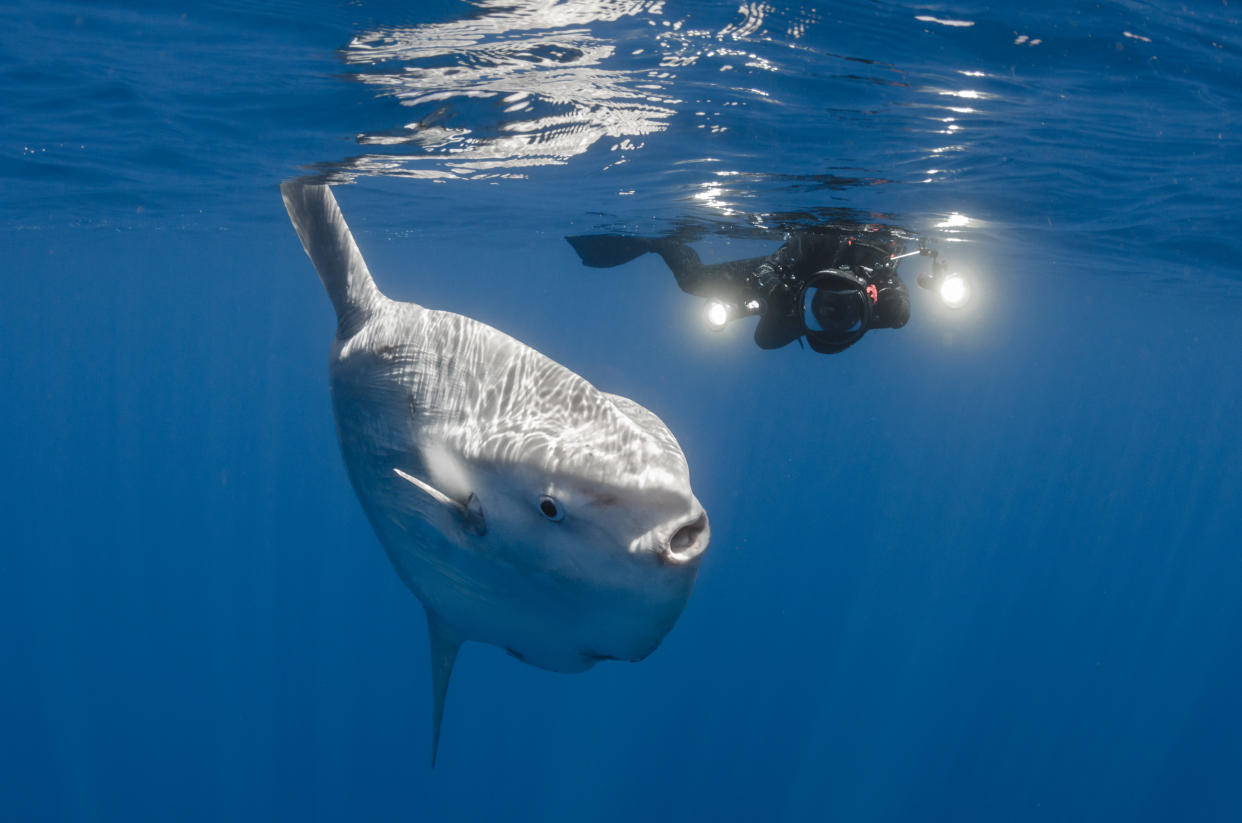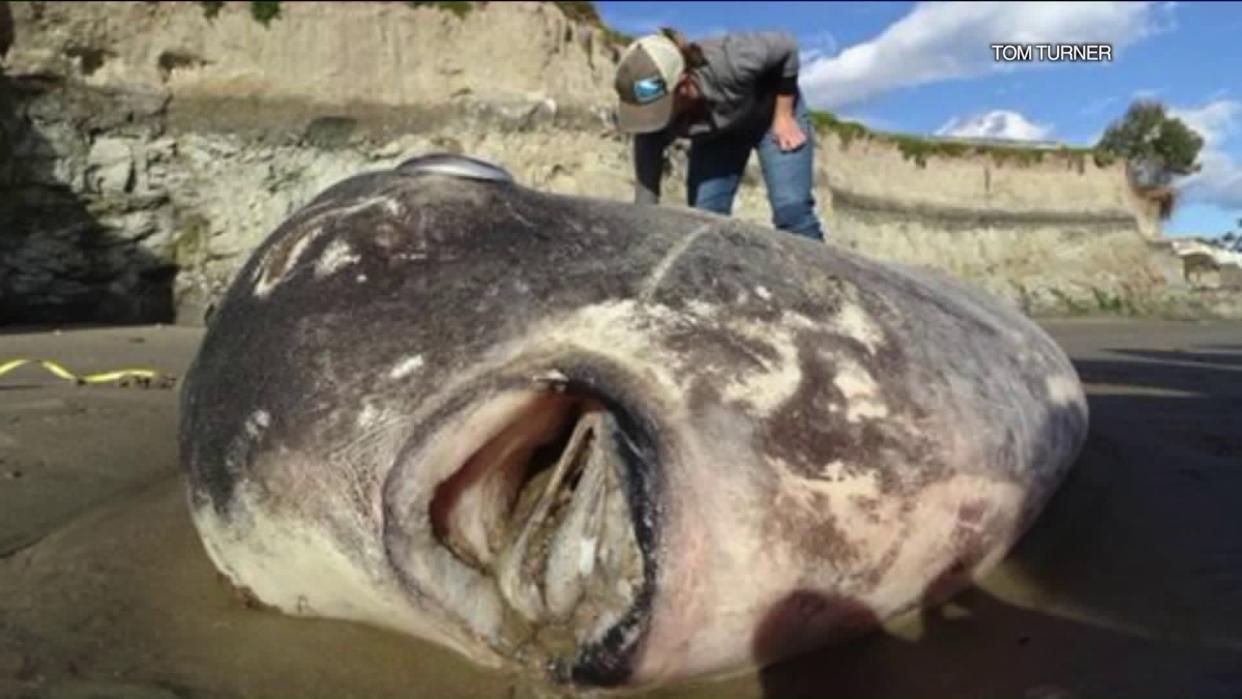Rare, massive sunfish washes up on California beach, marking first ever sighting in Northern Hemisphere
A rare species of sunfish washed up on a California beach last week, marking the first time one has been observed in the Northern Hemisphere, researchers said Wednesday.
The 7-foot-long creature, identified by biologists as a Mola tecta, or hoodwinker sunfish, was discovered on a beach near UC Santa Barbara's Coal Oil Point Reserve in Santa Barbara County on Feb. 19.
A press release on the reserve's website described the find as one of "those out-of-nowhere, first-ever discoveries that send scientists' hearts aflutter."
“It really was exciting to collect the photos and samples knowing that it could potentially be such an extraordinary sighting," said Jessica Nielsen, a conservation specialist at Coal Oil Point who was the first to see the deceased fish and facilitate its identification. "This is certainly the most remarkable organism I have seen wash up on the beach in my four years at the reserve."
See photos of the fish:
The massive creature was initially thought to be a mola mola, a sunfish known to inhabit the Santa Barbara Channel, according to KCBS.
However, photos of the creature posted to the reserve's Facebook page caught the attention of UC Santa Barbara Professor Thomas Turner, who then shared the images on iNaturalist, an online community for scientists sometimes used to crowd-source species identification.
The striking images caught the attention of two scientists, Marianne Nyegaard of Murdoch University in Australia and Ralph Foster of the South Australian Museum, who were hesitant to believe the fish was actually a hoodwinker without definitive proof.
"I thought that the fish surely looked an awful lot like a hoodwinker, but frustratingly, none of the many photos showed the clavus (a diagnostic feature) clearly," Nyegaard said. "And with a fish so far out of range, I was extremely reluctant to call it a hoodwinker without clear and unambiguous evidence of its identity."
After Turner and Nielsen sent more photos, along with tissue samples, of the massive fish to the other side of the globe, the Australian duo was able to confirm the exciting discovery.
"I literally, nearly fell off my chair — which I was already sitting on the edge of!" Nyegaard said. "There was just no doubt of the ID."
Although the fish has been positively identified, thanks largely to the help of social media and intercontinental teamwork, scientists are still scratching their heads as to how the massive creature ended up so far away from its known home in the Southern Hemisphere.



